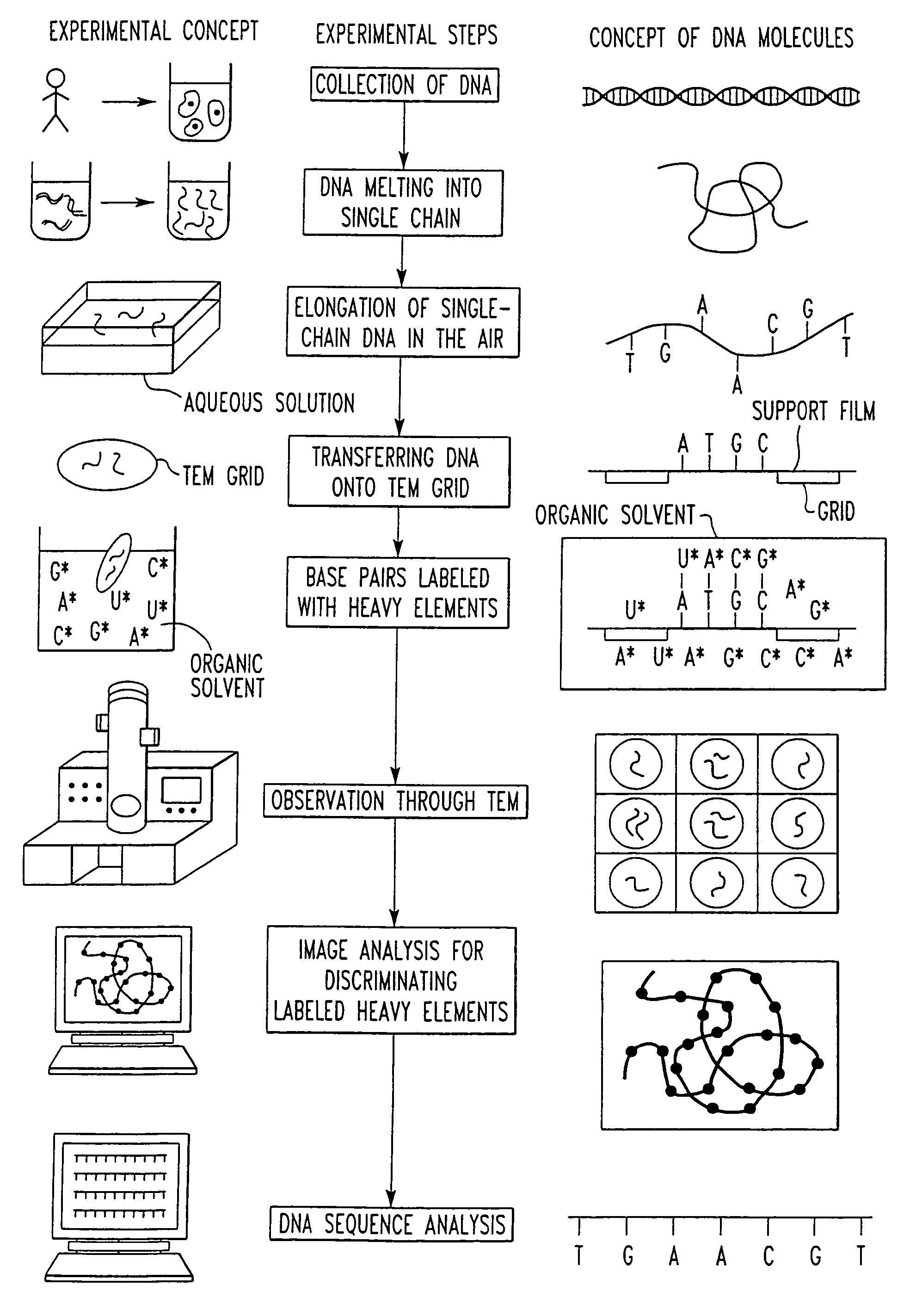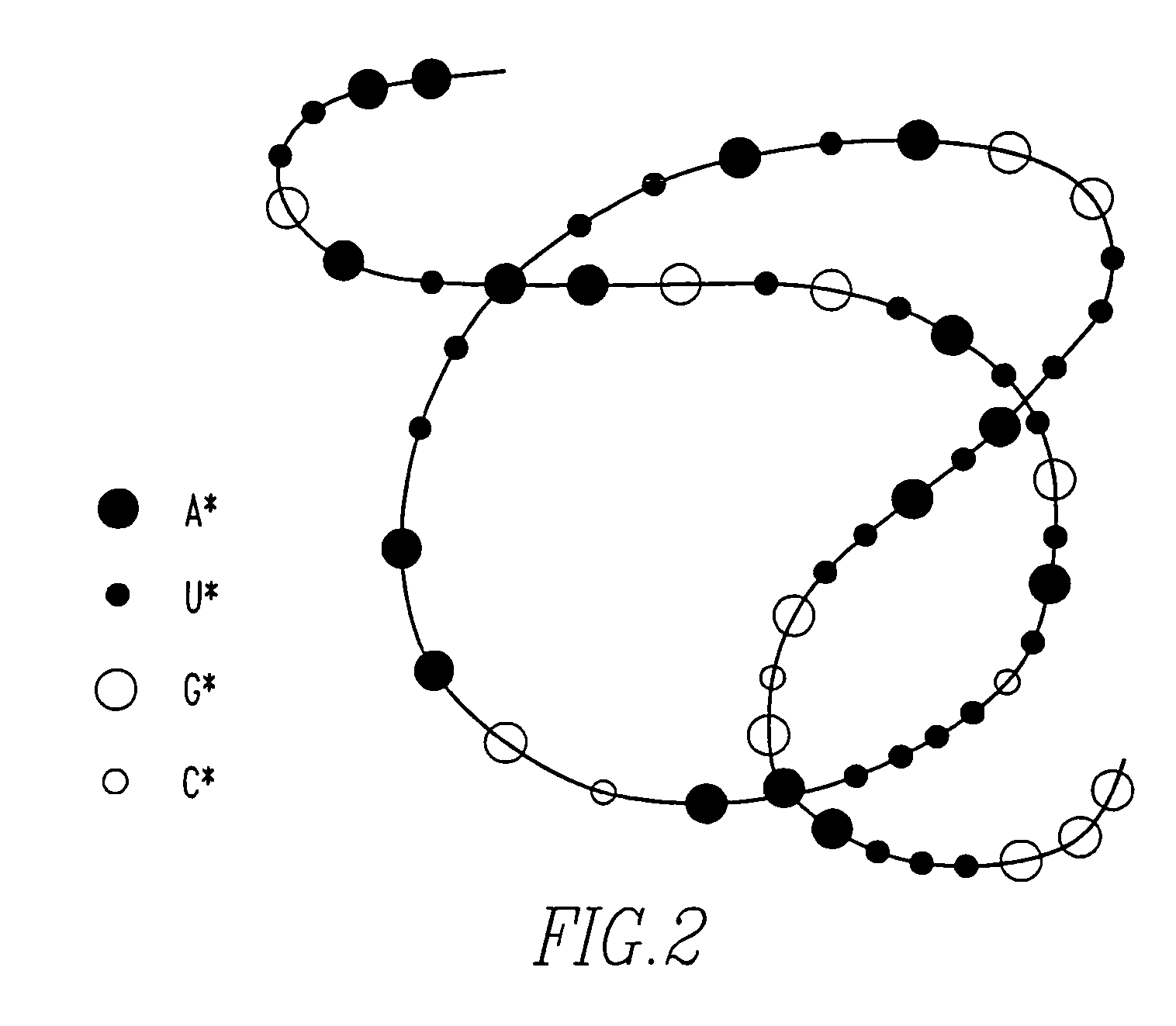Method of determining base sequence of DNA or RNA using heavy element labeling and imaging by transmission electron microscopy
a transmission electron microscopy and heavy element technology, applied in the field of determining the base sequence of a dna or the like, can solve the problems of low separation efficiency of electrophoresis, low analysis speed of each electrophoresis lane, and limit of this method
- Summary
- Abstract
- Description
- Claims
- Application Information
AI Technical Summary
Benefits of technology
Problems solved by technology
Method used
Image
Examples
Embodiment Construction
[0034]The present invention provides a DNA sequencer system including a high-resolution and high-contrast transmission electron microscope and an image analysis system. The sequencer system discriminates between base-specific labels of heavy elements, using a magnified image of elongated single-chain DNA or RNA produced by the transmission electron microscope (TEM). Thus, DNA or RNA sequence is determined at high speed. The sequencer system utilizes elongation of single-chain DNA and base-specific labeling of bases on single-chain DNA with heavy elements. The high-resolution and high-contrast TEM permits one to distinguish between the kinds of heavy elements. The image analysis system determines the sequence of DNA.
[0035]The whole DNA sequencer system in accordance with the present invention is conceptually shown in FIG. 1, which illustrates successive experimental steps. In this figure, the experimental concept and the concept of corresponding DNA molecules are summarized. Items to...
PUM
| Property | Measurement | Unit |
|---|---|---|
| atomic numbers | aaaaa | aaaaa |
| atomic numbers | aaaaa | aaaaa |
| dielectric constant | aaaaa | aaaaa |
Abstract
Description
Claims
Application Information
 Login to View More
Login to View More - R&D
- Intellectual Property
- Life Sciences
- Materials
- Tech Scout
- Unparalleled Data Quality
- Higher Quality Content
- 60% Fewer Hallucinations
Browse by: Latest US Patents, China's latest patents, Technical Efficacy Thesaurus, Application Domain, Technology Topic, Popular Technical Reports.
© 2025 PatSnap. All rights reserved.Legal|Privacy policy|Modern Slavery Act Transparency Statement|Sitemap|About US| Contact US: help@patsnap.com



